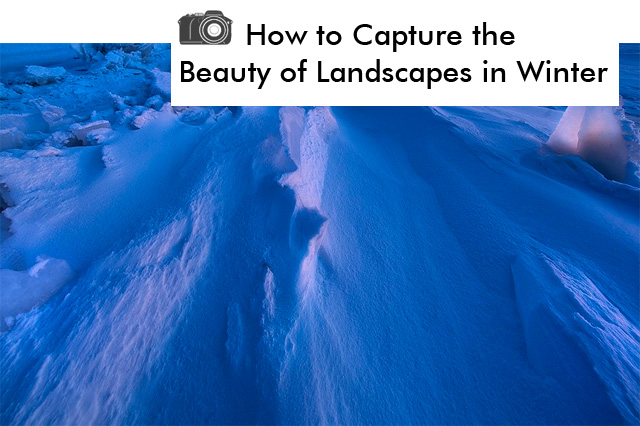
If you are willing to brave the elements, winter is a great time for landscape photography. Snow and ice create a unique atmosphere, and trees and plants look completely different with the arrival of winter. The following tips will guide you to produce stunning winter landscapes.
Best Digital Camera Tips for Travel Photography
15 Tips for Keeping Your Camera in Tip-Top Condition When Traveling
1) Dress for the environment.
If you are going out shooting in winter, it’s important to wear appropriate clothing. Wear layers of clothing which will keep you warm and comfortable, and be prepared for rain and snow. There’s nothing worse than finding a beautiful location and having to leave after a short because you are cold and wet. You may need to walk some distance to find the right views, so consider walking boots or other sturdy footwear.
2) Protect your equipment.
Cold temperatures and moisture can cause damage to cameras and other equipment if they aren’t designed for such conditions. Don’t take risks with your camera, and only use it in harsh conditions if you know it’s weatherproof. You should always wipe down and clean equipment after a winter shoot.
3) Think about the time of the day.
Capturing a really stunning winter landscape in a photograph may mean getting up before sunset. The sun remains close to the horizon throughout the day in winter, but the landscape still changes as the hours pass. Long shadows reveal textures and create a unique mood and atmosphere. Sunsets over snow-covered landscapes are another beautiful subject for photographs.
4) Use foreground interest.
Large expanses of snow can lose their impact in photographs, so frame pictures to include foreground interest for a sense of scale. Trees, rocks, frozen pools of water or man-made objects add an important dimension when positioned in the foreground of a landscape photograph.
5) Check exposures.
Large areas of white can fool the metering systems of most cameras, so don’t rely on them to get exposure right when photographing snowy landscapes. Over-expose shots or use manual metering to ensure detail is captured. Shooting in RAW format gives you much greater flexibility in the digital darkroom, and any exposure problems can be corrected. If you are shooting with a digital SLR camera, look at the histograms of shots as you take them to check the exposure range.
6) Don’t forget the details.
Capturing the beauty of winter in a photograph isn’t just about taking shots of snow-covered vistas. Pictures of frozen leaves, berries and other details are great for illustrating the impact of winter on the natural world. If you have a macro lens, look for small details such as icicles to photograph. If possible, try to capture photographs of birds and other wildlife in the winter landscape.
7) Pack some filters.
Photographic filters are great for shooting winter landscapes. Fitting a UV filter to your lens will remove the haze which can spoil a wide-angle landscape shot. A polarizing filter can be used to deepen the color of winter skies, and to remove reflections from frozen water. Neutral density filters can be useful in very bright conditions, and fitting one means you can work with wider apertures.
8) Pack a tripod.
Shooting outdoors in winter often means working in lower light conditions, so pack a tripod to reduce the risk of camera shake. Mounting your camera on a tripod means you can shoot scenes with a wide depth of field. Always clean and dry your tripod after using it outdoors in winter.